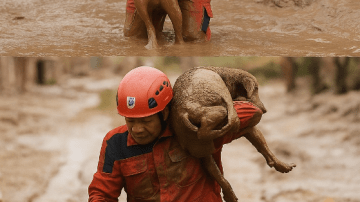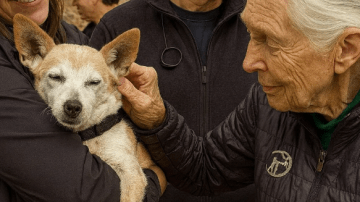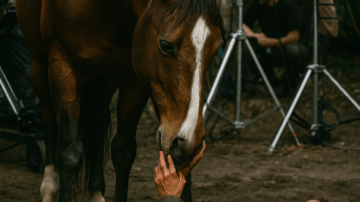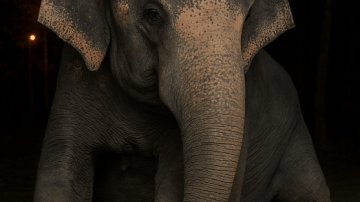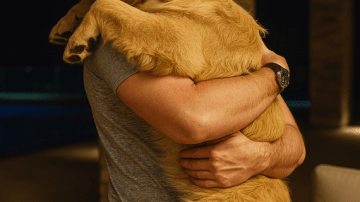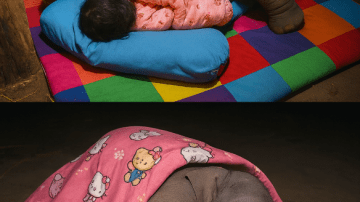It was just after dawn when the call came in—an urgent report about a homeless dog found unconscious by the roadside. His condition was described as “critical,” but nothing could have prepared us for what we were about to witness.
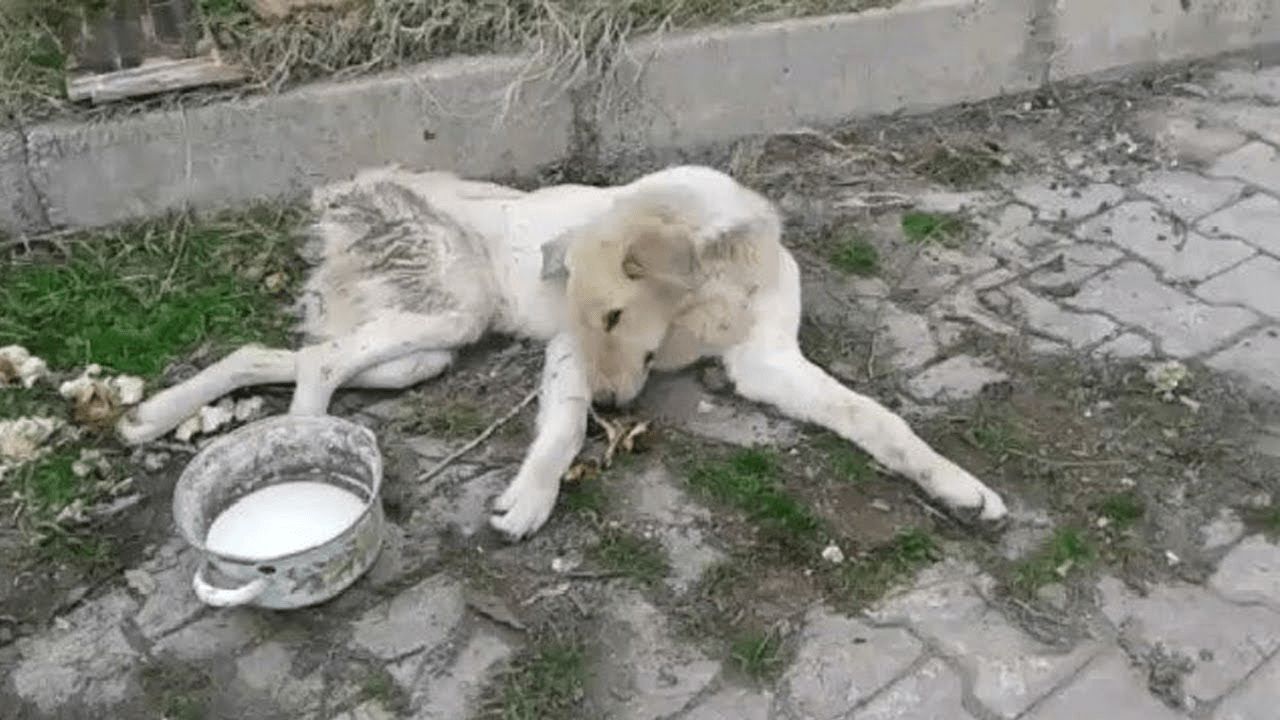
When we arrived, the scene was heartbreaking.
The dog lay there, barely clinging to life, his body twisted from pain. His mouth was open in a silent scream, but when the pain became unbearable, he howled uncontrollably. The sound echoed through the empty streets—raw, desperate, and haunting.
He wasn’t just hurt; he was broken.
Severe nerve damage had left him writhing helplessly on the ground, his muscles spasming uncontrollably. His strength was almost completely gone, and every breath seemed like a battle. From the marks on his body, it was clear he had been lying there all day, crying out for help. Hundreds of people must have passed by. But no one stopped.
No one came.
By the time I reached him, the sun was sinking below the horizon. The world was growing dark, and so was his fate. His body was paralyzed; he couldn’t even lift his head to look at me. His eyes were dull, as if the light inside him had almost gone out.
And then I saw the truth written across his fragile body—someone had beaten him. Mercilessly. Repeatedly. His injuries weren’t just from neglect; they were from cruelty.
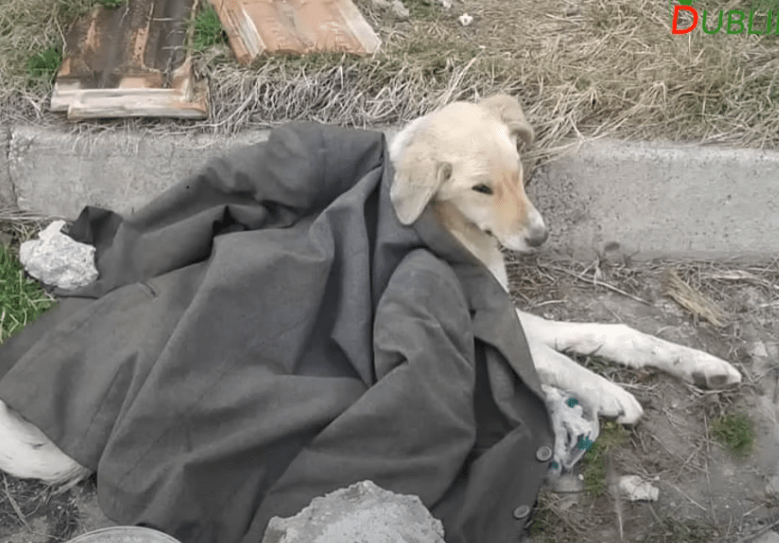
We had no time to lose. I wrapped him carefully in a blanket and carried him to the car. His breathing was shallow, irregular. I kept whispering, “Hold on… just hold on…” as we raced through the night toward the veterinary clinic.
When we arrived, the vet team immediately took him in. His temperature was dangerously high, his body convulsing from repeated seizures. There was internal bleeding—bright red blood seeping from his anus—and the smell of infection was unmistakable. The room filled with urgency as the team worked, attaching IV lines, administering sedatives and painkillers, running tests as fast as they could.
For the first time that day, after receiving pain relief, he calmed down. His breathing slowed. And then, with trembling effort, he ate a few tiny bites of food.
That fragile moment of relief gave us something precious: hope.
And that’s exactly what we decided to name him.
Hope.
Because even in the darkest hours, he hadn’t given up completely. And neither would we.
The medical team threw everything they had into saving him. They conducted bloodwork, neurological exams, and scans to assess the damage. Hope’s body was battered, but his heart was still fighting.
Day and night, the vets and volunteers cared for him. They kept him warm, monitored his seizures, and adjusted his treatment constantly. Slowly—almost imperceptibly at first—his condition began to stabilize. The seizures grew less frequent. The fever broke. His eyes, once empty, began to show flickers of awareness again.
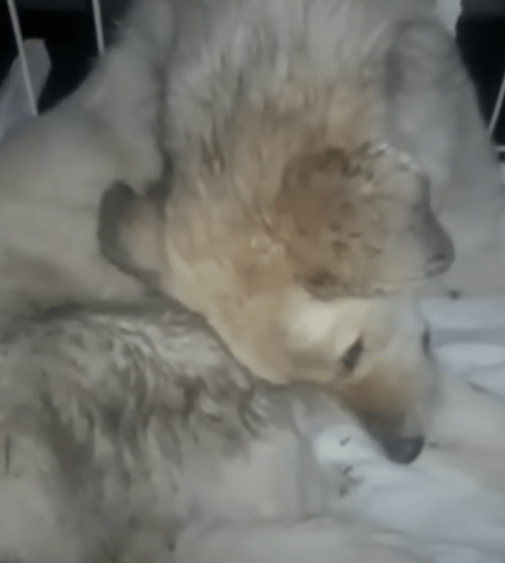
Day 15.
Two weeks had passed since that terrible night. Hope was still weak, his legs almost useless, but the spark in his spirit had grown stronger. I started gently training him to walk again, holding his body upright as his trembling paws touched the floor. Every tiny step he managed felt like a small miracle.
He fell often. He grew tired quickly. But every time he collapsed, he looked up at me—not with defeat, but with determination. He wanted to live.
Day 20.
For the first time, Hope was introduced to a wheelchair. It was an awkward contraption for him at first, and moving even a few inches was difficult. But his resilience was extraordinary. He learned to maneuver with stubborn persistence, pushing forward despite every challenge. Watching him struggle and keep trying was humbling.
This was no ordinary dog. This was a fighter.
Day 27.
Something extraordinary happened. Hope took his first shaky steps without any support. They weren’t perfect—his legs wobbled, his balance faltered—but he walked. And in that moment, everyone in the room knew: he was on his way back.
He stumbled, he fell, but he kept going.
Hope never gave up.
Seven weeks later.
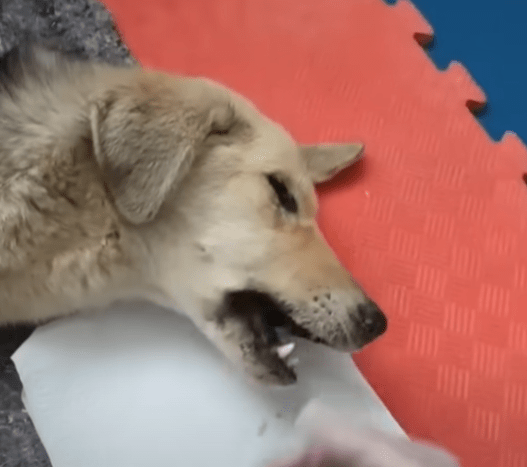
After countless hours of training, therapy, and love, the impossible happened. Hope was not just walking—he was running. His legs carried him forward with surprising strength, his tail wagging wildly behind him.
As I watched him sprint across the clinic yard for the first time, tears filled my eyes. This was the same dog who had been found dying by the roadside, paralyzed, beaten, and abandoned. And here he was now, racing toward life with everything he had.
Day 60.
Two months after we met, Hope had become unrecognizable—in the best possible way. His strength continued to grow each day. His playful, affectionate nature shone brightly. He loved everyone he met, greeting strangers with gentle curiosity and licking the hands of those who cared for him.
His resilience wasn’t just inspiring; it was life-changing.
Hope had become a symbol—not just for us, but for everyone who followed his story. A symbol of endurance, of second chances, of faith in the face of unimaginable pain.
He reminded us all that sometimes, hope is the only thing that keeps the light alive.
Today, Hope runs freely, eats with enthusiasm, and naps peacefully under warm sunlight. He is surrounded by people who love him and a community that cherishes him.
As I watch him now, strong and full of life, I whisper softly, “God bless you, brave boy.”
Because Hope isn’t just his name.
It’s what he is.
The living embodiment of hope itself.

